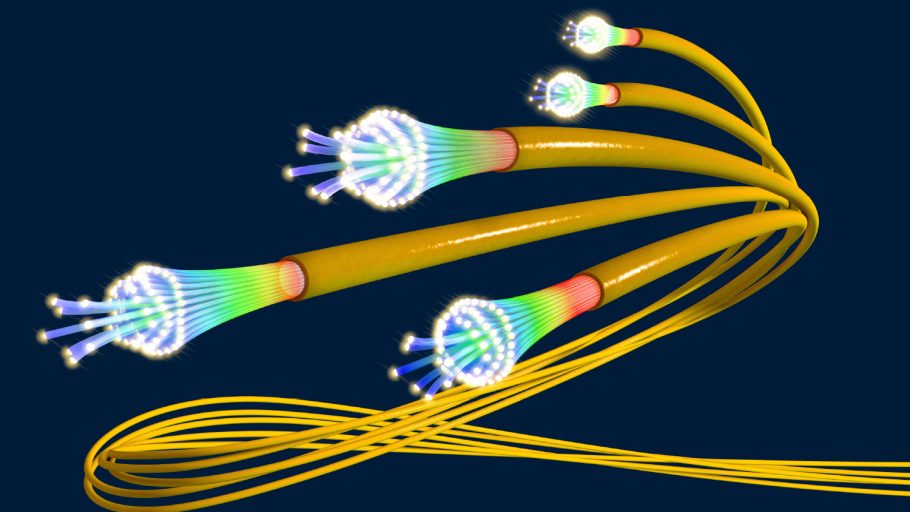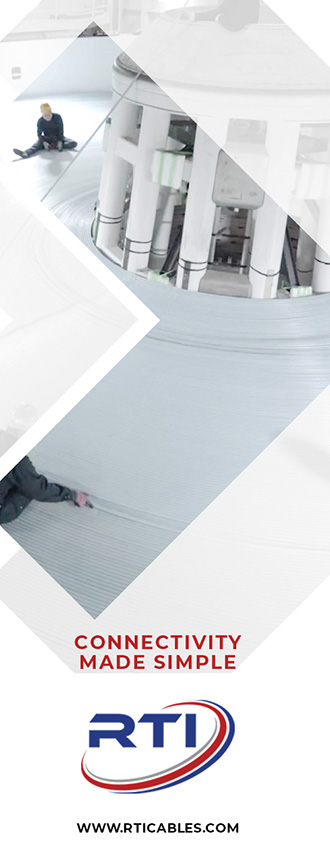The Evolving Subsea Industry
Like many 90s trends, festoon networks are having a comeback. A “festoon” network connects coastline locations using unrepeatered (passive) submarine cables to avoid terrestrial routes for a variety of reasons, such as challenging terrain (mountains), dense cities, and other reasons.
With the rapid growth in the digital infrastructure, the subsea cable industry continues to evolve around increased regional demand for connectivity diversity and new transport routes. With this expansion comes a renewed interest in festoon cable systems. Quicker, easier, and less expensive than building terrestrial networks, these systems can be particularly helpful in both emerging regions and developed regions by enabling connectivity diversity with existing terrestrial optical fiber infrastructure and helping get around challenging geography.
Festoon Subsea Cable Designs
Running parallel to coastlines, subsea festoon systems can be designed in various ways that are governed by specific requirements, geographical constraints, and available technology.
Independent of the network architecture, the physical cable infrastructure may be designed using unrepeatered or repeatered technology based on the overall design, distances between landing sites, and capacity requirements. Unrepeatered systems have no active submerged equipment that requires remote powering from the landing sites while repeatered systems have submerged optical amplifiers periodically inserted along the cable to help the optical signals overcome long transmission distances between distant end points.
With respect to networks themselves, festoon systems fall into three design categories: linear, trunk and branch, and ring.
Linear and trunk and branch architecture
In a linear festoon configuration, all the intermediary sites are connected to the two adjacent sites with dedicated subsea links. A linear festoon configuration can be considered as a collection of point-to-point cable systems in a cascade and requires landing two cable segments per intermediate site.
In order to maximize network availability in this configuration, each of these landings should be comprised of two distinct landings with some physical separation between the subsea cables at the shore end. Essentially each segment of a linear festoon system can be considered a separate system. This structural requirement puts more constraints on the project planning and implementation in terms of cost, regulations, technical capability, and project management.

Because festoon systems are typically designed as regional systems, they are often routed closer to the coast and in predominantly shallow water. As a result, festoons are vulnerable to an outage, and linear festoon systems have a higher degree of network vulnerability. For example, a cable cut in the middle of the system will cause the entire network to be split into subsections with no connectivity between the endpoints.
A trunk and branch style festoon system can overcome these issues. Branches in a submarine cable system are enabled by Branching Units (BUs), which join three cables instead of two and therefore permit connections between more than two points. In this system design, only branches that stem directly from the trunk cable approach landfall. Typically, these systems are implemented where the trunk will be routed in deep water and the branches are routed along the shallower continental shelf into a landing. Some fiber pairs in the trunk are designed as express fibers, while other fibers are routed to the intermediate landing sites via the subsea branches. Since damage is much more likely in the shallow water regions, any outages here would only affect the landing point served by a damaged branch, so traffic carried by the express fiber pairs, or fiber pairs routed to other branch landings, remains connected. More advanced branching unit functionality can also be achieved through repeatered cable systems with branching units remotely powered from the landing sites.
Because of its simplicity and the possibility to plan a phased implementation, the linear festoon system design has often been the preferred approach to building regional networks that serve multiple population centers. This kind of submarine cable system represents the simplest and most cost-efficient approach to connect the small centers of population scattered along the coast, so they can compete with and serve as alternatives to terrestrial routes.
However, the maintenance costs of these subsea networks could be higher than the operational costs of the domestic terrestrial networks. As a result, the debate to build and maintain terrestrial routes versus going subsea along the coast is a large decision-making driver for these festoon systems, and Italy decided not to replace their original Festoni network in light of these numbers. Nevertheless, linear festoon system architecture is still in several projects under construction, like the Prat cable system along the Chilean coasts and the N0r5ke Viking system along the Norwegian coast.
ABOUT THE AUTHOR
Eckhard Bruckschen is a master mariner and MBA with more than 30 years of experience in the offshore submarine cable industry. This experience includes plough and trenching / ROV operations; remedial works; installations of fiber optic, power, umbilical, and flexible pipes; and burial and bridge operations. Across his career, Bruckschen has managed the construction of over 40,000 kilometers of submarine fiber optic cables and 2,500 kilometers of submarine power cables.
Through his forward-thinking consulting firm, Wopschall works with a long-term view of submarine cable infrastructure planning and development. Wopschall is also the General Manager of the International Cable Protection Committee (ICPC), the leading international submarine cable authority that provides leadership and guidance on issues related to submarine cable security and reliability.



